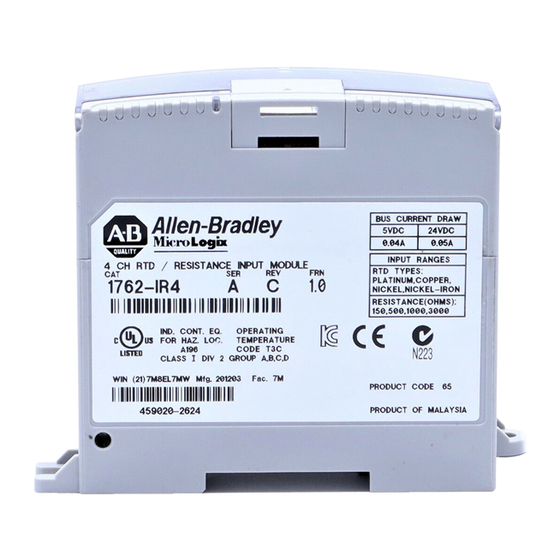
Allen-Bradley MicroLogix 1200 User Manual
Rtd/resistance input module
Hide thumbs
Also See for MicroLogix 1200:
- Reference manual (424 pages) ,
- User manual (162 pages) ,
- Installation instructions manual (20 pages)















Need help?
Do you have a question about the MicroLogix 1200 and is the answer not in the manual?
Questions and answers